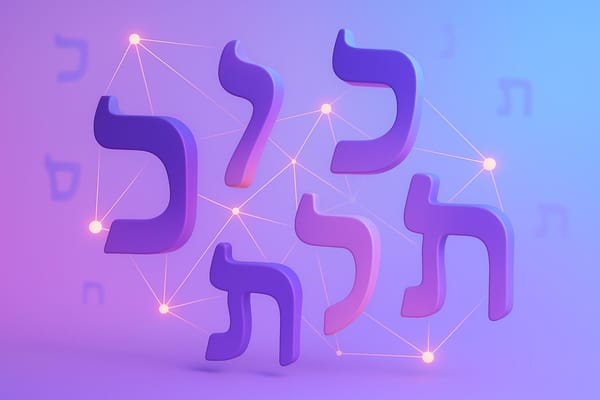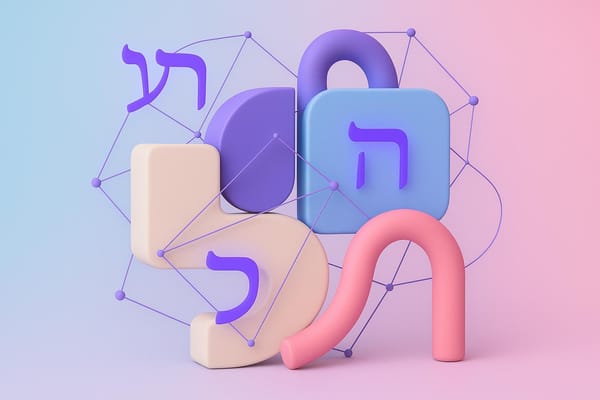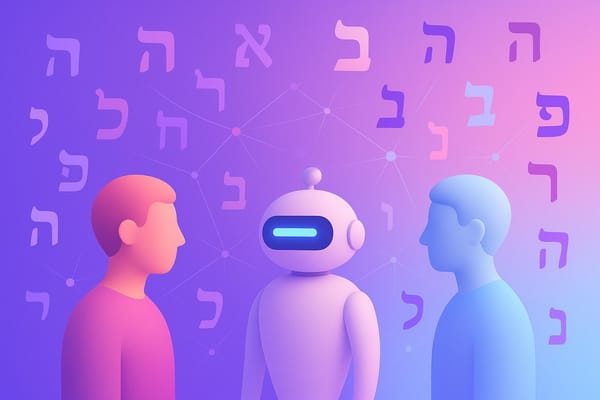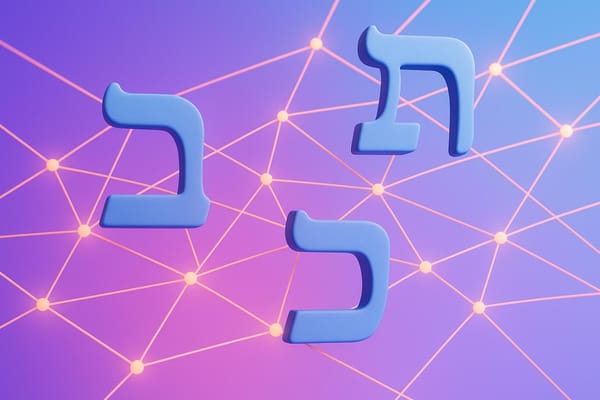Real-Time Hebrew Translation for Live Events
Explore the essentials of real-time Hebrew translation at live events, focusing on tools, challenges, and effective setup strategies.
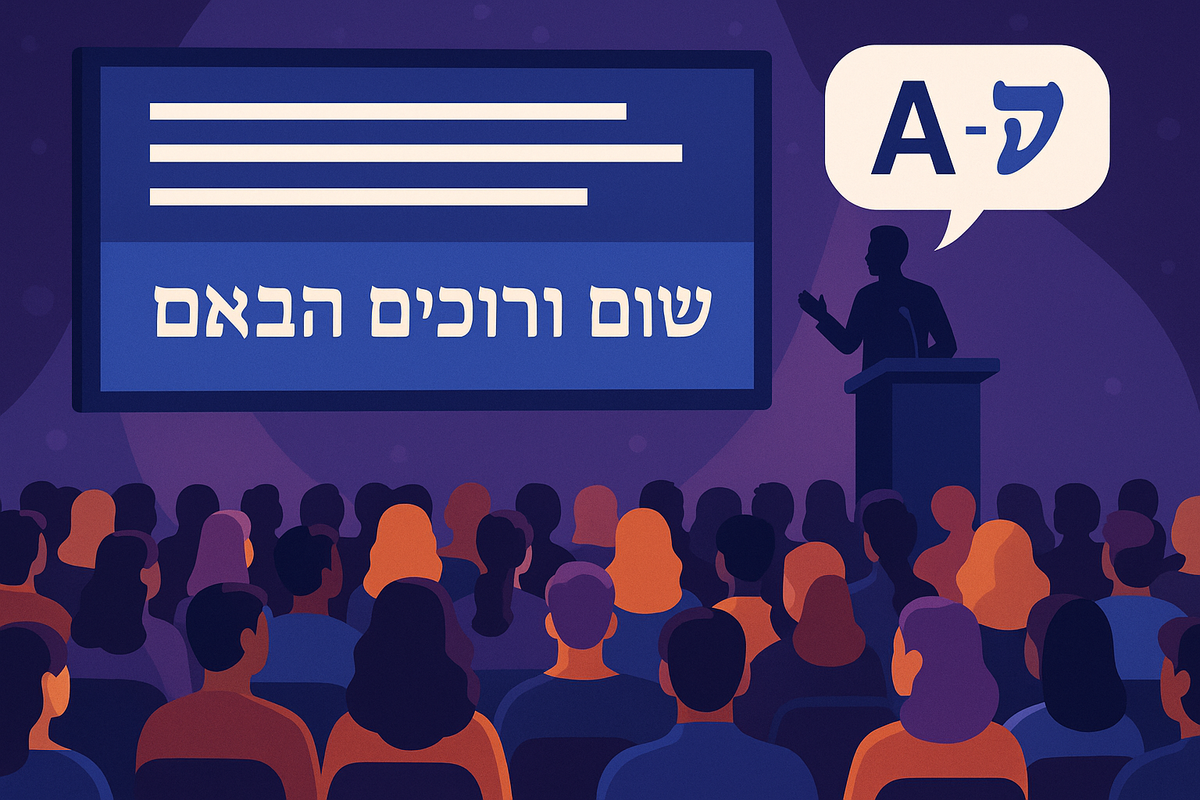
Real-time Hebrew translation helps live event attendees understand and engage with content in their preferred language. It uses AI tools or human interpreters to provide instant translations, accessible via QR codes or URLs. Here's what you need to know:
- Why It Matters: Over 80% of the global population doesn't speak English. Translation services make events more inclusive and productive.
- Challenges: Hebrew's right-to-left script, gender rules, and text expansion require specialized tools and careful planning.
- Solutions: Tools like Wordly, Interprefy, and baba combine AI speed with human accuracy to handle Hebrew's complexities.
- Setup: Small events need earbuds and a strong internet connection, while larger ones require interpreter booths, microphones, and receivers.
- Applications: Useful in business meetings, community events, and academic settings for seamless communication.
For a successful event, choose the right tools, prepare content in advance, and test equipment thoroughly.
Main Challenges in Hebrew Translation
Hebrew Language Specifics
Hebrew presents unique challenges for translation due to its right-to-left (RTL) script, gender rules, and text expansion. The RTL format requires careful adjustments to user interfaces (UI), ensuring proper alignment and functionality. Additionally, Hebrew's intricate gender system influences pronouns, nouns, adjectives, prepositions, and verbs, making accurate translation more complex.
Text expansion is another hurdle. Translating from English to Hebrew often results in longer content, which can complicate subtitle displays or presentation slides during live events. For example, Speechmatics highlights the importance of maintaining consistent terminology despite Hebrew's morphological complexity in real-time scenarios.
Effectively managing these linguistic challenges requires advanced technical solutions.
Technical Requirements
Real-time Hebrew translation demands a careful balance between speed and accuracy. According to Speechmatics, their system achieves 90% accuracy with less than one second of latency, operating 60% faster than comparable tools.
For live events, specific technical challenges and solutions include:
| Challenge | Impact | Recommended Approach |
|---|---|---|
| Latency vs. Accuracy | Faster processing may reduce context and accuracy | Aim for latency under 4 seconds while maintaining clarity |
| Background Noise | Affects speech recognition quality | Test tools in environments similar to the event venue |
| UI Adaptation | RTL layout impacts interface elements | Mirror buttons, menus, and other UI components |
| Text Processing | Expanded text can disrupt layouts | Use flexible designs to accommodate varying text lengths |
"The small accuracy impact at lower latencies in real-time (<4s) comes due to having less context from the speaker." - Speechmatics
To ensure smooth operation, event organizers should conduct thorough pre-event testing and confirm that translation tools work seamlessly across devices and screen sizes.
Modern AI solutions, such as Translation Memory and Pre-Translation Toolkits, help standardize terminology while respecting cultural nuances, ensuring effective real-time Hebrew communication.
Using Wordly Translation at In-Person Events

Translation Tools and Software
Real-time translation is crucial for navigating the complexities of Hebrew during live events. With the technical needs discussed earlier in mind, here are some top tools designed for real-time Hebrew translation.
Popular Translation Tools
Several platforms offer reliable Hebrew translation features:
- Wordly: Delivers over 500 million minutes of translation across 60+ languages, requiring minimal setup and integrating easily with video conferencing platforms.
- Boostlingo Events: Handles large events with real-time speech and captions, though it may struggle with highly specialized terminology.
- Interprefy: Combines AI with human interpreters, making it a strong choice for complex events needing high accuracy, albeit at a higher cost.
One standout solution specifically designed for Hebrew is baba – Smart Hebrew Translation.
baba - Smart Hebrew Translation
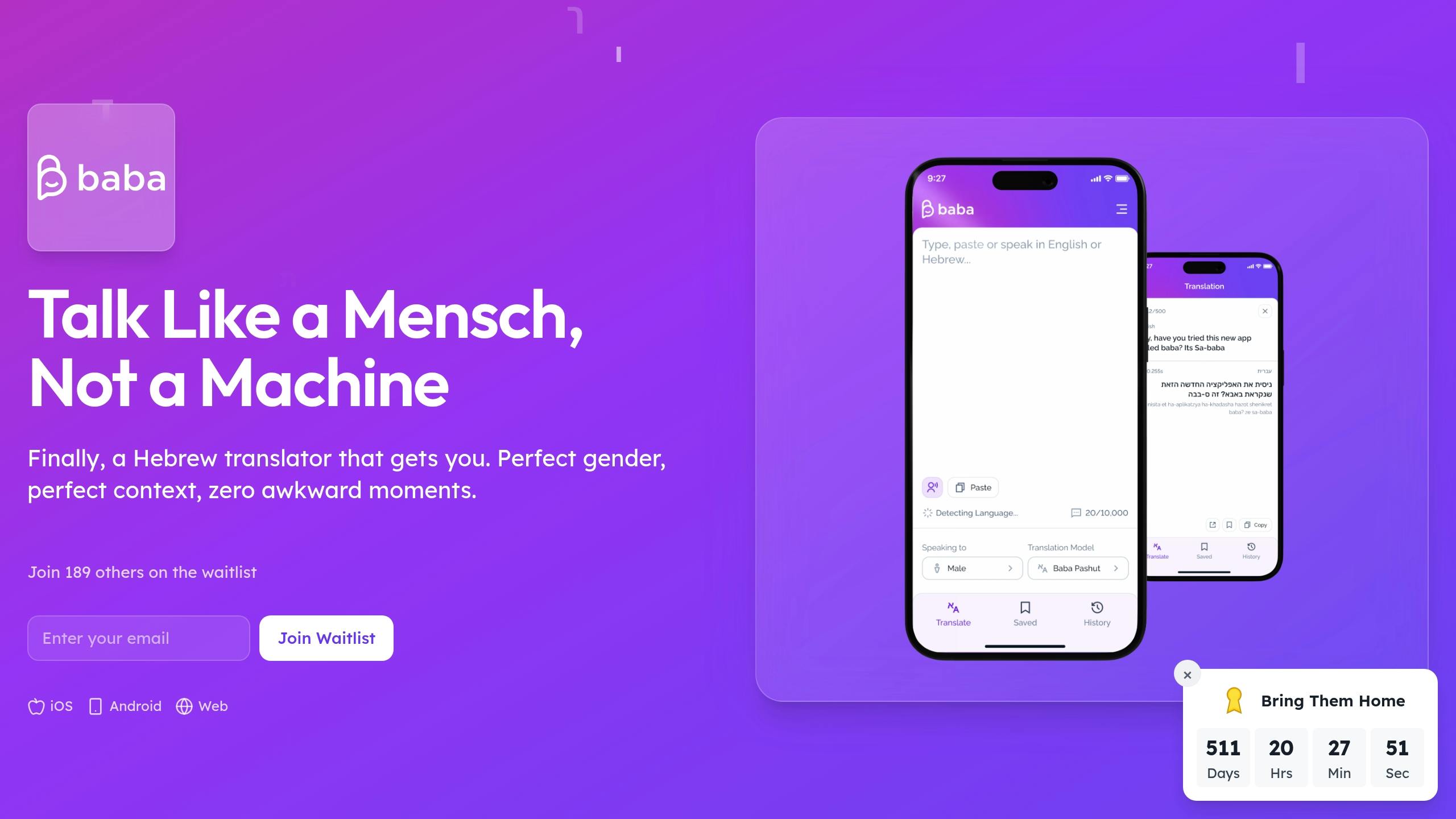
baba offers translations that reflect cultural nuances through context-aware technology. This ensures clear and confident communication, whether in business meetings or casual settings. Interested users can join the waitlist for baba’s mobile app at www.itsbaba.com.
Comparing Tools
Here’s a closer look at how these tools perform in key areas:
- Accuracy and Speed
-
Integration Options
- Maestra: Offers real-time captions and integrates with OBS, vMix, and Chrome extensions.
- Kudo: Blends human and AI translation with customizable integration features.
- AI-Media: Supports live captioning across major video platforms.
When selecting a tool, consider factors like event size, content type, budget, technical support, and integration needs. Translation technology continues to improve in tackling Hebrew’s unique challenges while delivering the speed and precision required for live events.
Setting Up Live Hebrew Translation
Equipment Needs
To set up live Hebrew translation, choose your hardware and software based on the size of your event.
For smaller gatherings (fewer than 50 participants):
- Timekettle WT2 Edge/W3 translator earbuds ($299.99): Great for two-way conversations.
- A stable internet connection with at least 10 Mbps upload/download speeds.
- A smartphone or tablet to run translation apps.
For larger events (50 or more participants):
- Williams Sound PPA R37 Receivers ($135.00 each or $1,350.00 for a 10-pack).
- Interpreter booths with proper soundproofing.
- Professional microphones and headsets for clear communication.
- An audio mixing console to manage multiple audio feeds.
- A transmission system to distribute translations effectively.
Pre-Event Planning Steps
Proper planning is key to a smooth translation experience. Here's what to focus on:
-
Technical Setup:
- Test your internet connection and have a backup ready.
- Configure all audio equipment and translation tools in advance.
- Set up interpreter stations or virtual translation platforms.
- Ensure audio routing works seamlessly between speakers and interpreters.
-
Content Preparation:
- Upload speaker presentations and any supporting documents.
- Build a glossary for specific industry terms.
- Translate visual materials ahead of time.
- Use clear signage to inform attendees about translation options.
-
Communication Protocols:
- Train speakers on using microphones properly.
- Implement push-to-talk systems for sessions in multiple languages.
- Create slides showing how attendees can access translations.
- Place signs in meeting rooms to highlight translation services.
Problem-Solving Guide
Even with careful planning, issues may arise. Here’s how to handle common problems:
-
Audio Quality Issues:
- Mute interpreters when they’re not speaking.
- Use noise-canceling headsets for better clarity.
- Position microphones at an appropriate distance from speakers.
-
Translation Accuracy:
- Import custom glossaries for specialized terms.
- Use real-time editing tools to fix captions on the fly.
- Enable automatic language detection for multilingual sessions.
-
Connection Problems:
- Always have a backup internet connection ready.
- Ensure technical support is on hand throughout the event.
- Prepare offline translation options as a contingency.
Where to Use Hebrew Translation
Business Meetings and Conferences
Real-time Hebrew translation plays a key role in international business, bridging communication gaps between Hebrew speakers and global partners. For virtual meetings, AI platforms offer a practical and scalable solution. For instance, during the CBMC Asia Pacific Convention (October 23–26, 2024), organizers used Interprefy AI Speech Translation to connect business leaders from various regions.
Some common business uses include:
- Negotiating international trade deals involving Israeli companies
- Delivering investment pitches for Israeli startups
- Conducting corporate training for multinational teams
- Hosting board meetings with Israeli participants
Real-time translation isn't just for corporate settings - it also helps foster connections in community spaces.
Community Events
Translation services are just as impactful at community and cultural events. This is especially true in the United States, home to the second-largest Hebrew-speaking population (around 220,000 fluent speakers).
"We don't just interpret words; we weave connections through our unparalleled Hebrew interpretation services." – The Translation Gate
These services enhance inclusivity during:
- Cultural festivals with live translation
- Religious ceremonies, offering real-time interpretation for attendees
- Artistic performances, making them accessible to non-Hebrew speakers
- Community gatherings of diverse participants
For example, on July 16, 2024, VISITFLANDERS used Interprefy's translation services to create a more inclusive and engaging experience.
Academic Settings
Academic institutions also benefit greatly from Hebrew translation. These services help overcome language barriers in scenarios like:
- Research presentations where Israeli scholars address global audiences
- Guest lectures featuring Hebrew-speaking professors
- Student exchange programs that connect diverse participants
- Multilingual academic conferences
At the Women's HealthTech Conference on July 30, 2024, AI translation made complex medical and technical discussions accessible to a wider audience. Combining human expertise with AI tools is a practical way to handle both nuanced and large-scale academic events.
Summary and Next Steps
Using the detailed planning and technical tips provided earlier, here's a checklist to help you finalize your event setup:
1. Pre-Event Planning
- Evaluate your event's specific needs.
- Assign a program manager to oversee the process.
- Create a glossary to clarify key terminology for everyone involved.
2. Choose the Right Tools
Pick translation software that matches your event's requirements. Here's a quick comparison of popular platforms:
| Platform | Best For | Key Features |
|---|---|---|
| Wordly | General events | Auto language detection; translated transcripts |
| Boostlingo Events | Large-scale events | High scalability; strong integrations |
| Kudo & Interprefy | Technical content | Combines AI and human interpretation |
| AI-Media | Captioning needs | Broad language support |
Once you've chosen your tools, move on to setting up the technical side.
3. Technical Setup
- Test your internet connectivity to ensure smooth performance for remote interpreters.
- Check audio quality and volume levels for clarity.
- Link translation platforms to your video systems.
- Set up QR codes or direct URLs to make access seamless for attendees.
To maintain high standards, conduct regular quality assurance testing with native Hebrew speakers. This helps catch issues like text rendering problems, right-to-left alignment errors, and other usability concerns. Additionally, set up a system for ongoing updates to keep your localization efforts in line with software changes.


